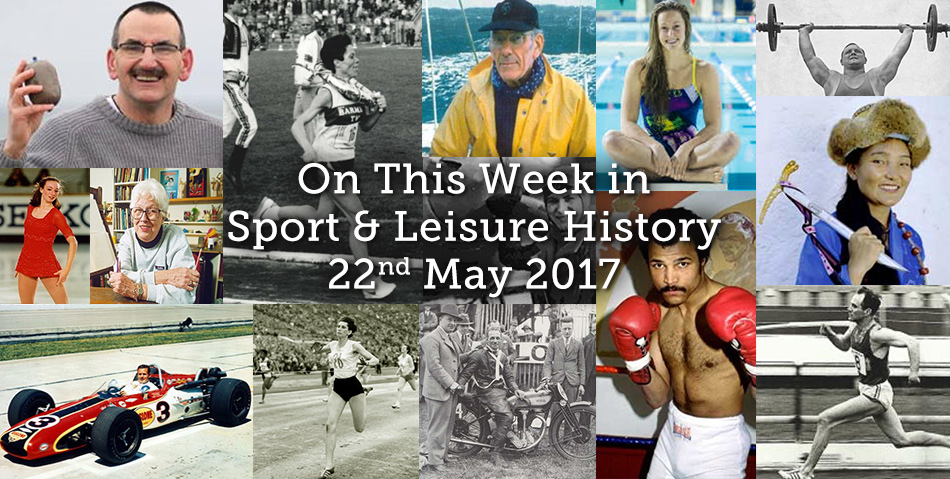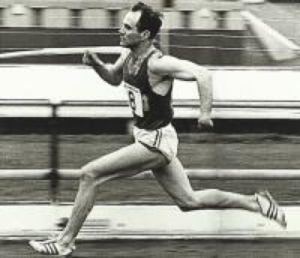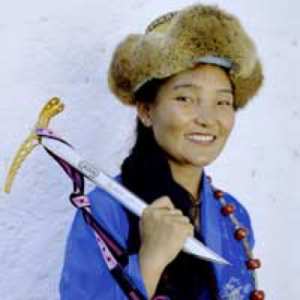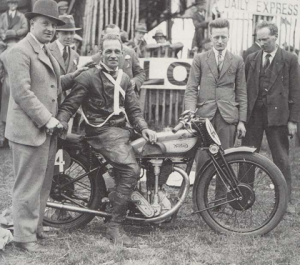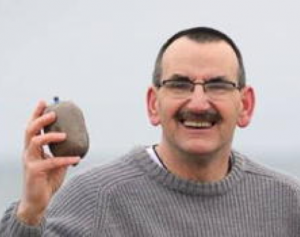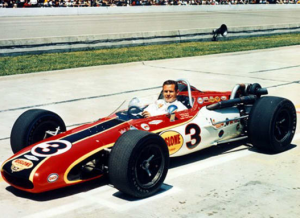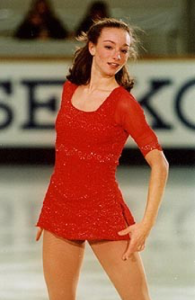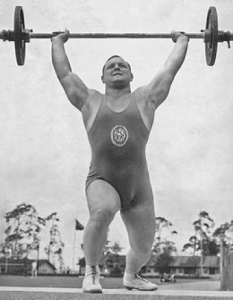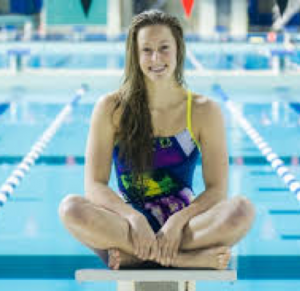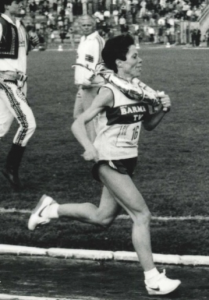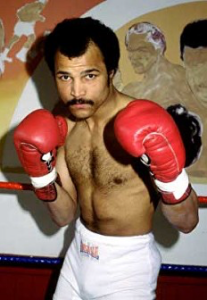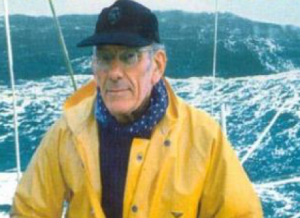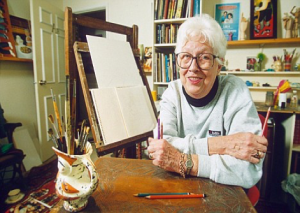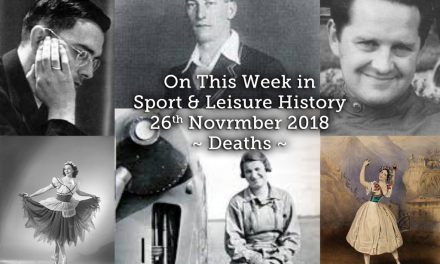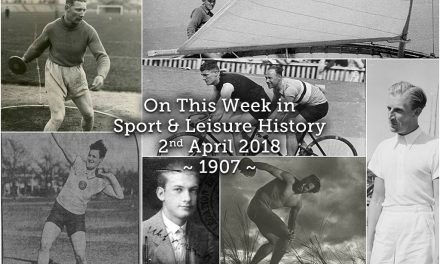22nd – On this day in 1804 the Lewis and Clark Expedition, also known as the Corps of Discovery Expedition,officially began. It was the first American expedition to cross what is now the western portion of the United States. It began near St. Louis, made its way westward, and passed through the continental divide to reach the Pacific coast. The Corps of Discovery comprised a selected group of U.S. Army volunteers under the command of Captain Meriwether Lewis and his close friend, Second Lieutenant William Clark. President Thomas Jefferson commissioned the expedition shortly after the Louisiana Purchase in 1803 to explore and to map the newly acquired territory, to find a practical route across the western half of the continent, and to establish an American presence in this territory before Britain and other European powers tried to claim it. The campaign’s secondary objectives were scientific and economic: to study the area’s plants, animal life, and geography, and to establish trade with local Native American tribes. With maps, sketches, and journals in hand, the expedition returned to St. Louis to report its findings to Jefferson. The Associated Press was formed on this day in 1900 in New York as a non-profit making news cooperative. In 1906 The Wright Brothers were granted a US patent (No 821,393) for their “Flying-Machine” Walter Menzies Campbell, Baron Campbell of Pittenweem, often known as Ming Campbell, British Liberal Democrat politician, advocate and former athlete was born on this day in 1941. . He was the MP for North East Fife from 1987 to 2015 and was the Leader of the Liberal Democrats from 2 March 2006 until 15 October 2007. Campbell held the British record for the 100m from 1967–74, having run the distance in 10.2 seconds. He captained the Great Britain athletics team in 1965-66. He is currently the Chancellor of the University of St Andrews. He was nominated for a life peerage in the 2015 Dissolution Honours. He has stated that he believes the House of Lords should be “mainly elected” and will continue to promote that idea “within the house itself.” Born on this day in 1946, one of the world’s most talented footballers, George Best. Rated second only to Pele by the game’s leading experts, he was a temperamental player, causing difficulties both on and off the pitch. He made his debut for Manchester United at 17. In 1970 The Cricket Council reversed a decision to allow South African cricketers to tour England this summer. The move followed strong pressure from the Home Secretary, James Callaghan. After a 90-minute meeting at Lord’s Cricket Ground with other members of the council, its secretary SC Griffith said in a statement there had been a “formal request from Her Majesty’s Government to withdraw the invitation to the South African touring team”. “With deep regret the council were of the opinion that they had no alternative but to accede to this request and they are informing the South African Cricket Association accordingly.” England planned to play five matches against a Rest of the World team instead. Only four days previously English cricket’s ruling body had given the green light for the tour which was due to begin the following week. It said this would be the last time white South African test cricket came to Britain. During a meeting on Thursday at the Home Office, Mr Callaghan questioned the reasoning behind the invitation and warned of the consequences for the Commonwealth Games, due to take place in Edinburgh in July. African and Asian countries which had threatened to boycott the Games if the tour went ahead now said they will now attend. The news was welcomed by anti-apartheid activist Peter Hain, whose Stop The Seventy Tour campaign had threatened to disrupt any matches played during the tour. South Africa’s Minister of Sport, Frank Waring, was furious at the announcement. “It amounts to bowing down to irresponsible elements that manifest a total disregard for sport and the rights of others,” he said. In 2001, secret government documents published under the 30-Year Rule revealed that Peter Hain, then a Minster for Europe in a Labour government, had been under surveillance in 1970. Harold Wilson’s government had even considered charging him with seditious conspiracy for threatening to disrupt the proposed cricket tour. The apartheid system – which saw South Africa ousted from the British Commonwealth in 1961, excluded from sporting events and subjected to trade sanctions in the 1970s and 1980s – started to come apart in 1985. That year, non-whites won limited constitutional rights and interracial marriage was permitted. President P W Botha resigned in 1989 and his successor FW de Klerk repealed all apartheid laws by 1991 but only whites could vote and segregation continued. A new constitution enfranchised all South Africans in 1993 and Nelson Mandela became the country’s first black president in 1994. Henrietta Ónodi, Hungarian artistic gymnast, was born today in 1974. She competed at the 1992 and 1996 Olympics and won gold and silver medal in 1992. After retiring from gymnastics in 1997 she moved to the United States, married American Olympic pentathlete Jimbo Haley, and became a naturalized U.S. citizen. In 2010, she was inducted into the International Gymnastics Hall of Fame. In 1989 she became the first female Hungarian gymnast to medal at the European Championships with a gold on the uneven bars and in the Barcelona Games Ónodi became the first female Hungarian gymnast in over 30 years to win an Olympic gold medal. She tied with Romanian Lavinia Miloșovici for the gold in the vault final; on floor exercise, performing to “Hungarian Rhapsody” she finished second behind Miloşovici. Ónodi’s difficulty level on vault was actually higher than Milosovici’s (they both used full twisting Yurchenkos but Henrietta did a piked barani and Milosovici a tucked). Ónodi also performed the difficult triple twist on floor, then an unusual move (nobody else in the Barcelona floor finals did it). On this day in 1987 the first ever Rugby World Cup kicked off with hosts New Zealand playing Italy at Eden Park in Auckland. 16 teams competed in the inaugural tournament, seven of which were automatically filled by the International Rugby Football Board members—New Zealand, Australia, England, Scotland, Ireland, Wales and France. South Africa was unable to compete because of the international sports boycott due to apartheid. There was no qualification process to fill the remaining nine spots. Instead invitations were sent out to Argentina, Fiji, Italy, Canada, Romania, Tonga, Japan, Zimbabwe and the United States. This left Western Samoa controversially excluded, despite their better playing standard than some of the teams invited. The USSR was to be invited but they refused the invitation on political grounds, allegedly due to the continued IRFB membership of South Africa. The tournament witnessed a number of one-sided matches, with the seven traditional IRFB members proving too strong for the other teams. Half of the 24 matches across the four pools saw one team score 40 or more points. New Zealand defeated France 29–9 in the final at Eden Park, the tournament was seen as a major success and proved that the event was here to stay. It also led to many countries joining the International Rugby Football Board which in turn led the IRFB to become the true authority for the running of international rugby union. Wembley Stadium went all-seater in 1990 for the England versus Uruguay friendly. Only 38,751 people bothered to turn up to see England’s first home defeat in six years. Today in 1993 Riddick Bowe wins the heavyweight boxing title via a TKO over Jesse Ferguson in the second round. Pemba Doma Sherpa, the first Nepalese female mountaineer to climb Mount Everest via its north face, and the second Nepali woman to summit from both the north and south faces, died on this day in 2007. She is one of six women to have summited Everest twice and was the leader of the 2002 Nepalese Woman Everest Expedition. A resident of Namche-1 of Solukhumbu district, Pemba Doma had been raised by her grandparents after her parents died when she was two. She attended classes in one of the schools built by Edmund Hillary. She was the founder of the Save the Himalayan Kingdom charity, which focused on educating Nepali children regardless of caste. She was also the director of the Climb High Himalaya trekking company. Ms Pemba, who became fluent in nine languages, fell from an elevation of 8000m while descending Lhotse. The fall was witnessed by Australian mountaineer Philip Ling who was also climbing the mountain. Two other Sherpas also perished while trailing a group of clients during a snowstorm. A statement by the Nepal Mountaineering Association said that the tragedy highlighted the enormous risk that high-altitude Sherpa guides face. It said they had to cross dangerous areas several times for the sake of clients, while allowing them to descend first during bad weather. On this day in 2012 Tokyo Skytree opens to the public. It is the tallest tower in the world (634 m), and the second tallest man-made structure on Earth, after Burj Khalifa (829.8 m).
- Ming Cambell
- Pemba Doma Sherpa
23rd – William Halpenny, Canadian pole-vaulter was born in 1882. He competed in the 1912 Olympics winning the bronze medal. In 1829 Armenian Cycrill Demian and his two sons Karl and Guido, who made their living as piano and organ makers, presented a new instrument to the Vienna authorities for patent. On this day that patent was officially granted, the instrument was the accordion. Otto Lilienthal, German pioneer of aviation, nicknamed the flying man was born on this day in 1848. He was the first person to make well-documented, repeated, successful flights with unpowered airplanes. Newspapers and magazines published photographs of Lilienthal gliding, favourably influencing public and scientific opinion about the possibility of flying machines becoming practical. On August 9, 1896, his glider stalled and he was unable to regain control. Falling from about 15m (50ft), he broke his neck and died the next day, 10 August 1896. American competitive fencer William O’Connor was born in 1864. He competed in the 1904 Olympics and won the silver medal in the singlestick competition. Jimmie Guthrie, Scottish motorcyclist was born in 1897. He was most famous for winning 19 motorcycle Grand Prix, 3 victories in the North West 200 and 6 wins at the Isle of Man TT races. During the 1937 Isle of Man TT races he won the Junior TT but retired on lap 5 of the 1937 Senior TT race on the A18 Mountain Road section of the course. After his death in 1937 when competing in the 1937 German Grand Prix, a memorial funded by public subscriptions was erected on the TT course in 1939, at the place where he retired in his last race, previously known as The Cutting, called Guthrie’s Memorial ever since. The inscription on the memorial reads as follows: James Guthrie, 1897-1937. Erected to the memory of Jimmy Guthrie, of Hawick, a brilliant Motor Cycle Rider, famous on the Isle of Man Tourist Trophy Course for his wonderful riding and great sportsmanship. He won the race six times. Beat many world’s records and was first in numerous foreign races. He died while upholding the honour of his country in the German Grand Prix, August, 1937. Hélène Boucher the famous French pilot of the early 1930s was born in 1908. She set several women’s world speed records, including one which was also a world record for either sex. She became the first pupil at the flying school run by Henri Fabos at Mont-de-Marsan. She rapidly obtained her licence at 23 and bought a de Havilland Gypsy Moth and learned to navigate and perform aerobatics. Her great ability was recognised by Michel Detroyat who advised her to focus on aerobatics, his own speciality Their performances drew in crowds to flight shows and after attending a few aviation meetings, she sold the Moth and bought an Avro Avian, planning a flight to the Far East; in the event she got as far as Damascus and returned via North Africa, limited by financial difficulties. On 30 November 1934 she died aged 26 near Versailles when her machine crashed into the woods of Guyancourt. Posthumously, she was immediately made a knight of the Légion d’honneur and was the first woman to lie in state at Les Invalides, where her funeral obsequies were held. She is buried in Yermenonville cemetery. Parts of the press and others held Detroyat responsible for her death, spurring a “young, innocent girl” to such a “dangerous sport”. Cricket’s Brylcreem boy of the 1950s, Denis Compton, was born in 1918. He made his debut for Middlesex in 1936 and during a 28-year career in first-class cricket scored nearly 39,000 runs. He played for England 78 times, scoring 5807 runs. His greatest achievements came in the 1947 season when he scored a remarkable record-breaking 3816 runs, including a record 18 centuries. Denis player football for Arsenal, as did his brother Leslie, and won an FA Cup winner’s medal in 1950. Both also played football for England, although Denis only appeared in a wartime international. Today in 1941 Joe Louis beat Buddy Baer via a DQ in the 7th to become heavyweight boxing champion. Anatoly Karpov, the Soviet world chess champion, 1979-85, was born in 1951. He won 26 out of the 32 tournaments he played during his reign as world champion. Former world middleweight boxing champion Rocky Graziano died, aged 68, in 1990. The subject of the Paul Newman film Somebody Up There Likes Me, Graziano took the title in 1947 by beating Tony Zale in Chicago. He lost his title to Zale 11 months later and in 1952 failed in a second attempt to regain it when ‘Sugar’ Ray Robinson knocked him out in the third round. On this day in 1995 the first version of the Java programming language was released. Spanish mountaineer, alpinist and climber Iñaki Ochoa de Olza died on this day in 2008. He took part in more than thirty separate climbing expeditions in the Himalayas over the course of his career, and he was involved in more than 200 expeditions as a guide. His records included climbing 12 of the world’s 14 tallest mountains (repeating one of them, Cho Oyu) without the aid of oxygen or oxygen tanks. Ochoa went on record as saying that he did not believe in using oxygen to climb mountains, claiming “if you use oxygen, you are not an alpinist, you are more of an astronaut or a scuba diver”. He died while attempting to climb the 8091m Nepalese mountain Annapurna with his climbing partner Horia Colibășanu. Dangerous weather conditions forced them to halt their ascent near to the summit as well as severe frostbite to Ochoa’s hands. On their decent Ochoa collapsed and suffered a seizure and he and his partner were unable to descend any further due to Ochoa’s sudden illness and incapacitation. Attempts were made to save Ochoa’s life. Swiss climber Ueli Steck, who had abandoned his own attempt with Simon Anthamatten to climb Annapurna’s south face due to avalanche threat the previous week, climbed to Ochoa’s position to administer emergency medical aid. Doctors from the Hospital of Navarre also tried to help Ochoa remotely from Pamplona. However, heavy snow conditions and the high altitude made all rescue attempts impossible. Rescues above 7400m are usually impossible because helicopters cannot hover at that altitude and few people are able to handle the altitude. Steck and Colibasanu were left to administer first aid to Ochoa. Iñaki Ochoa de Olza died at 6:45am GMT in an emergency tent on Annapurna, where he had been trapped in a semiconscious and immobile state for five days. His body still remains there, at 7400m on the Annapurna, as per his family’s request. Spanish professional road racing cyclist Xavier Tondo Volpini died in a bizarre accident on this day in 2011. He was killed after being apparently trapped between his own garage door and car, and crushed by the door, while preparing his bicycle for a training ride. Teammate Beñat Intxausti was with him at the time of the accident. To commemorate Xavier Tondo the 100%Tondo sportive is held annually. Starting in Sant Joan les Fonts and finishing in Vallter 2000.
- Jimmie Guthrie
- Hélène Boucher
24th – In 1877 the MCC and Ground cricket team dismissed Oxford University for 12 runs at Oxford. The total remains the lowest for a first-class innings, although the inevitable record was alter shared with Northants in 1907. Oxford batted one man short. French tennis star Suzanne Lenglen, the first non-English speaking winner of the Wimbledon Ladies Singles, was born in 1899. She won the first of her six Wimbledon titles in 1919 and in the process caused a stir with her grace and athleticism. The loose, short-length dress she wore revolutionised fashion in the Ladies game. Five of her six titles were won in consecutive years, 1919-1923. She also won six doubles and three mixed doubles titles, giving her a then-record 15 Wimbledon titles. Today in 1930 Amy Johnson landed in Darwin, Northern Territory thus becoming the first woman to fly solo from England to Australia. She left on May 5th for the 11,000 mile flight. French middle-distance runner Maryvonne Dupureur was born in 1937. She won silver medals at the 1964 Olympics and 1967 European Indoor Games in the 800m. She also took part in the 1960 and 1968 Olympics. Between 1959 and 1969 Dupureur won ten national titles: six in the 800m, three in the 400m and one in the 1500m. She lived for many years in Brittany, and taught physical education and sport at a high school in Saint-Brieuc until her retirement. Polish sprinter and one of the world’s foremost athletes for nearly two decades in multiple events, Irena Szewińska, née Kirszenstein was born in 1946. Between 1964 and 1980 she participated in five Olympic Games, winning seven medals, three of them gold. She also broke six world records and is the only athlete (male or female) to have held a world record in the 100m, 200m and the 400m events. She also won 10 medals in European Championships. Between 1965 and 1979 she gathered 26 national titles and set 38 records in the 100–400m sprint and long jump. At her first Olympics in Tokyo in 1964, she took silver in the Long Jump and 200m and ran the second leg of the gold medal winning 4x100m relay team. She was a double sprint winner at the World Student Games in Budapest in 1965. In 1966, at the European Athletics championships she won gold in the long jump, 200m and 4x100m relay; and took silver in the 100m. At her second Olympics in Mexico, She won bronze in the 100m, but failed to qualify for the Long Jump final. She recovered from that disappointment, to win 200m gold in a new World Record time. In the sprint relay the Polish team dropped the baton on the final exchange in the semi-final and finished last. After giving birth to her son, in 1971 – she managed bronze in the long jump at the European Championships in Helsinki. She would compete in the 3 events at the Munich Olympics in 1972, the 2 sprints and the long jump, coming away with 200m bronze. In the 1974 she became the first woman to break the 50-second barrier for 400m, and she set a new world record of 22.21 s for 200m. At the European Championships in the Rome she won the sprint double, beating the favoured GDR sprinter Renate Stecher; and ran the anchor leg on the 4x100m relay team which won bronze. She won her final Olympic medal in Montreal in 1976, by winning 400m gold in world record time of 49.29, At the inaugural World Cup of Track and Field in 1977, she won both 200m and 400m; beating both favoured East German runners Barbel Wockel and Marita Koch respectively. In her final appearance at the European Championships at 32 she won 400m bronze and the 4x400m relay. She was ranked number 1 in the world 7 times in the 200m; 4 times in the 400m, and twice at 100m; as well as 3 times in the long jump. Overall, she was ranked for 15 years in the top ten at 200m, also 4 times number 2, twice at number 3, which just leaves 2 years outside the top 3; (from 1964 to 1977 she was ranked in the top 3 – 200m runners in the world) a remarkable achievement. She was ranked 12 times in the 100m, 8 times in the long jump and 6 times in the 400m which she only took up in 1974. In 1998, she became a member of the IOC and in 2004 she was appointed head of the Polish Federation of Athletics. On 3 August 2005, she was elected as the third woman to the IAAF Council, she is a member of the International Jewish Sports Hall of Fame, and the IAAF Hall of Fame. On this day in 1964, the world’s worst stadium disaster occurred in the Peruvian capital Lima when more than 300 people died. Peru hosted Argentina at the Estadio Nacional in Lima. The game, in the qualifying round for the Tokyo Olympics’ football tournament, was seen as vital for Peru, then holding the second qualifying place in the CONMEBOL table, who would face a tough match against Brazil in their final game. The match attracted a capacity 53,000 crowd to the stadium. With Argentina leading 1–0 and six minutes of normal time remaining, a would-be equalising goal by Peru was disallowed by Uruguayan referee Ángel Eduardo Pazos. This decision infuriated the home fans and triggered a pitch invasion. The Peruvian police fired tear gas canisters into the northern grandstand to prevent further fans from invading the field of play. This caused panic and an attempt at a mass exodus to avoid the gas. Rather than standard gates, the stadium had solid corrugated steel shutters at the bottom of tunnels that connected the street level, via several flights of steps, to the seating areas above. These shutters were closed as they normally were at every game. Panicked spectators moving down the enclosed stairways pressed those in the lead against the closed shutters, but this was not visible to the crowd pushing down the stairwells from behind. The shutters finally burst outward as a result of pressure from the crush of bodies inside. All of those that died were killed in the stairwells down to the street level, most from internal haemorrhaging or asphyxia. No one who remained inside the stadium died. The official number of those who died is 328, but this may be an underestimate. Even this total is 38 higher than those killed in the Hillsborough disaster, Bradford fire, Heysel disaster, 1971 Ibrox disaster and Burnden Park disaster combined. Following the incident, a decision was made to reduce the seating capacity of the stadium from 53,000 to 42,000 in 1964, although this was later increased to 47,000 for the 2004 Copa América. On this day in 1968, American boxer Bob Foster defeats holder Dick tiger for the world light-heavysweight championship at Madison Square Gardens, he goes on to defend his title 14 times. At Inchmurrin, Strathclyde, in 1984 Alan Pettigrew set a world record by throwing a haggis 180ft 10in (55.1m). On this day in 1999 Lawrence Dallaglio resigned as England’s rugby union captain following newspaper allegations that he took and dealt hard drugs. The RFU made the announcement at Twickenham after a three-hour meeting with the London Wasps star at a secret location in London. The 26-year-old told the RFU he would be withdrawing from the England squad to tour Australia that summer after the News of the World reported that he had admitted he had used and sold drugs before taking up rugby. The tabloid newspaper also reported he had boasted of taking drugs at a party during the Lions’ successful tour of South Africa. Dallaglio “categorically denied” the principal claims in the News of the World that he had dealt in drugs, including cocaine and ecstasy. In a statement he added that “the circumstances in which the supposed admissions were obtained amounted to an elaborate set-up”. But News of the World editor Phil Hall said: “We stand by our story. Lawrence Dallaglio is damned in his own words and frankly, we are amazed at his denial.” The RFU launched an immediate investigation into the affair. Dallaglio provided the authorities with blood and urine samples and the RFU announced that every member of the touring party will also be tested for drugs. England coach Clive Woodward, who was among the panel of six senior RFU figures who met Dallaglio, said he was “bitterly disappointed” for the player and his family but was confident he would be “proved innocent” by the investigation. The affair severely dented the image of a man widely regarded as a clean-cut hero and saviour of English rugby. On 23 August the RFU dropped drugs charges against Dallaglio – much to his relief – after “new evidence” emerged during an open hearing chaired by a high court judge. It decided not to ban him but instead imposed a fine of £15,000 for bringing the game into disrepute – on top of legal costs amounting to £10,000. Dallaglio has since emerged from the scandal with honours. He was part of the World Cup-winning team in 2003 and he was re-appointed England captain following Martin Johnson’s retirement from the role in 2004. Dallaglio announced his retirement from international rugby a few months later and was replaced as captain in October 2004 by Johnny Wilkinson. However, he was persuaded out of retirement to play in the British and Irish Lions tour of 2005 and he also played for England during the 2006 Six Nations Championship. Ronald Tudor “Ron” Davies, Welsh footballer died on this day in 2013 aged 70. He played as a centre forward and spent most of his career with Southampton in the Football League First Division, and also for the Welsh national team. Born in Holywell, Flintshire he went to the same school as the Spurs defender Mike England, whom he played alongside in internationals for Wales. He was known as a header of the ball and was the top goal scorer in Division 1 for two seasons (1966–1968). In his first season at Southampton, he scored 12 goals in 10 consecutive league games. His younger brother Paul was an Arsenal youth player who went on to play for Charlton Athletic. Ron always attributed his ability and strength to jump for crosses to the fact that during his time at Chester, his first professional contract signed in July 1959, he was made to hurdle wearing army boots.
- Irena Szewińska
- Alan Pettigrew
25th – On this day in 1868 the Australian Aboriginal Cricket tour of England began with a game versus Surrey Gentlemen. Carl Johan “Massa” Lind, Swedish Hammer and Discus thrower was born in 1883. He competed at the 1912 1920, 1924 and 1928 Olympics, In 1912 he finished fifth in the hammer and eighth in the two handed discus. At the 1920 Games he won silver in the hammer and bronze in the 56lb weight throw, both times behind Patrick Ryan. At the 1924 and 1928 Games he competed only in hammer throw and finished 7th and 14th, respectively. Lind won 17 Swedish titles: in the hammer throw (1918–1924), weight throw (1918–19, 1921–1927) and discus throw (1910); he was also a four-time British AAA Champion in the hammer throw (1913–14, 1921, 1927). In 1912 Lind set a national hammer throw record that stood for 15 years. Lind worked as a policeman in Karlstad and continued competing until the age of 50. In 1895 the playwright, poet, and novelist Oscar Wilde was convicted of “committing acts of gross indecency with other male persons” and sentenced to serve two years in prison. The first Jamaican Olympic gold medallist Arthur Stanley Wint was born on this day in 1920. In 1942 he joined the British Commonwealth Air Training Plan and set the Canadian 400m record while training there. He was sent to Britain for active combat during World War II as a pilot. He left the RAF in 1947 to attend St Bartholomew’s Hospital as a medical student. In the 1948 London Games, Wint won 400m gold in 46.2 seconds, beating his team-mate Herb McKenley. In the 800m he won silver but missed a probable third medal when he pulled a muscle in the 4x400m relay final. In Helsinki 1952 he was part of the historic team setting the world record while capturing the gold in the 4x400m relay. He also won silver in the 800m, again coming second to Mal Whitfield. Wint ran his final race in 1953 at Wembley Stadium, finished his internship, and graduated as a doctor. The following year he was made a MBE, in 1955 he returned to Jamaica, eventually settling in Hanover as the only resident doctor in the parish. In 1973 he was awarded the Jamaica honour of the Order of Distinction. He served as Jamaica’s High Commissioner to Britain and ambassador to Sweden and Denmark from 1974 to 1978. He was inducted in the Black Athlete’s Hall of Fame in the US (1977), the Jamaica Sports Hall of Fame (1989) and the Central American & Caribbean Athletic Confederation Hall of Fame (2003). In 1922 Babe Ruth was suspended for one day and fined $200 for throwing dirt on an umpire. Jesse Ownes set six world records in 45 minutes at Ann Arbor, Michigan, in 1935. One of them, the long jump, stood for 25 years. Owens reckoned he was suffering from a bad back at the time. The feat has been dubbed “the greatest 45 minutes ever in sport”. On this day in 1963 Great Britain ended its amateur-professional classes in cricket. Today in 1967 Celtic became the first British team to win the European Cup, beating favourites Internazionale Milan 2-1. An estimated crowd of 70,000 crammed into the Portuguese National Stadium in Lisbon to witness the Glasgow side lift the greatest prize in club football. The manager, Jock Stein, said: “There is not a prouder man on God’s Earth than me at this moment. Winning was important, but it was the way that we won that has filled me with satisfaction. “We did it by playing football; pure, beautiful, inventive football. There was not a negative thought in our heads.” According to the Celtic players, Stein told his players to “go out and enjoy themselves” at the start of the match. The celebrations began immediately at sound of the final whistle and although the Portuguese police feared the crowd would get out of control, there was no hooliganism. But the chaos inside the stadium meant that the Celtic players could not be presented with the trophy on the pitch. Instead club captain Billy McNeill had to be ushered round the outside of the stadium under armed escort. He then climbed the stairs to the presentation podium where he finally held the trophy aloft to enormous cheers from the crowd. Jubilant fans danced in the streets of Glasgow after hearing of their club’s 2-1 win. The victory is regarded as the greatest in the Scottish club’s history, with the 11 players becoming known as the Lisbon Lions – the first non-Latin side to win the European championships. The team players were all born within a 30-mile radius of Glasgow. They flew into Glasgow the following day and were transported by coach to Celtic Park where an estimated 50,000 people had packed into the grandstand and terraces to greet their heroes. Ten years to the day later in 1977, Liverpool won the trophy for the first time beating Borussia Monchengladbach 3-1 in Rome. Today in 1980 Polish high jumper Jacek Wszoka set a new world record of 2.35m (7ft 8in). On this day in 1981 Indy 500 driver Bobby Unser became the centre of one of the most controversial finishes in Indy 500 history at the 1981 Indianapolis 500 and became the first driver in the sport’s history to be disqualified. Unser won the pole and led the most laps (89). On lap 149, during a caution period, Bobby and Mario Andretti made their pit stop and headed back to the race. Bobby passed eight cars during the caution, while Mario passed two cars. Unser went on and won the race, but was stripped of it the following morning in favour of second-place finisher Mario Andretti. After a 5-month lawsuit, Bobby Unser was re-awarded the win in October 1981. But for his infraction, Unser was instead fined $40,000. But the controversy and financial impact (Unser once estimated that the commercial endorsements he lost because of the delayed result cost him $1 million) caused a bitter Unser to retire from racing at the end of the year. In his autobiography Winners are Driven, Unser expressed his beliefs that the debacle was politically motivated and that USAC disqualified him (and benefited Andretti), hoping to start a falling-out between Pat Patrick, Mario’s car owner & owner of Patrick Racing, and Roger Penske (owner of Unser’s car); in order to destroy CART. He claimed that Patrick’s team did not protest the finish and that Patrick was on Unser’s side in the controversy. American former figure skater and now chief meteorologist for WROC-TV, New York, Stacey Pensgen was born in 1982. Pensgen began skating at the age of six after watching figure skating on television. From 1998, she was coached mainly by Richard Callaghan at the Onyx in Rochester. She was also coached by Mitch Moyer at the Detroit Skating Club in Bloomfield Hills, Michigan; she represented Genesee Figure Skating Club. She won bronze at the 1999 ISU Junior Grand Prix in Canada and silver at the 2000 Four Continents Championships. Her highest place at the U.S. Championships was sixth in 2000. Pensgen also competed in pair skating. Early in her career, she skated with her brother, Nathan Pensgen. In 2002, she teamed up with Derek Trent and placed 14th at the 2003 U.S. Championships. Aly Raisman, American gymnast was born in 1994. She was a member and captain of both the 2012 “Fierce Five” and 2016 “Final Five” US women’s Olympic gymnastics which won their respective team competitions. At the 2012 Olympics in London, she won gold medals in the team and floor competitions, as well as the bronze medal on the beam, making her the most decorated American gymnast at the Games. At the 2016 Olympics in Rio de Janeiro, she won gold in the team event, making her and teammate Gabby Douglas the only Americans with back-to-back team golds. Raisman also won silver medals in the individual all-around and floor exercise. Raisman was also a member of the gold-winning American teams at the 2011 and 2015 World Championships.
- Bobby Unser
- Stacey Pensgen
26th – On this day in 1884, Australian cricketer Fred Spofforth takes 7-34 and 7-3 against an England XI in four hours. Football’s Matt Busby was born in 1909. He took over as manager of Manchester United in 1945 and led them to three League titles before the Munich air disaster in 1958 destroyed the team he has so carefully nurtured and of which all football enthusiasts had such high hopes. He came back from the tragedy, leading a rebuilt United team to further League success and eventually, in 1968, to an historic win in the European Cup, the first by an English club. Josef Manger German heavyweight weightlifter was born in 1913. He won a European title in 1935, an Olympic gold medal in 1936, and two world titles in 1937 and 1938. Between 1935 and 1941 he set 11 ratified world records, ten in the press and one in the snatch. His career was cut short by World War II, after which he worked as a salesman. A street in Bamberg, his hometown, was named in his honour. The first Le Mans Grand Prix d’Endurance is run on this day in 1923, it has been run annually in June ever since. In 1927 Andre Lagache and Rene Leonard drove a Chenard and Walcker to victory in the Le Man 24 Hour race at an average speed of 57.21mph (92km/hr). Top South African tennis player of the 1960s and early 1970s, Cliff Drysdale was born in 1941, he later became a well-known tennis announcer. He was one of the Handsome Eight, a group of players signed by Lamar Hunt in 1968 for the newly formed professional World Championship Tennis (WCT) group. He became President of the Association of Tennis Professionals (ATP) when it was formed by Jack Kramer, Donald Dell, and himself in 1972. Drysdale was ranked World No. 4 in 1965 by Lance Tingay of The Daily Telegraph. Drysdale won the singles title at the Dutch Open in Hilversum in 1963 and 1964. In 1965 he won the singles title at the German Championships by defeating Boro Jovanović in the final. During his Open era career, Drysdale captured five singles titles and six doubles titles including winning the 1972 US Open doubles crown with Roger Taylor. He defeated Rod Laver in the fourth round of the first US Open in 1968. He was a pioneer of the two-handed backhand which he used to great effect in the 1960s. He became a naturalized United States citizen after retiring as a player. Today, he serves as a tennis commentator on ESPN. He is the founder of Cliff Drysdale Tennis (along with partner Don Henderson) which specializes in resort, hotel, and club tennis management. In 1998 Drysdale won the William M. Johnston Award for contribution to men’s tennis, given by the USTA. In 2013 Drysdale was elected into the International Tennis Hall of Fame. South African athlete Zola Budd was born in 1966. The bare-foot runner was at the centre of two controversies in 1984. The first arose when the Daily Mail newspaper orchestrated a campaign to enable her to compete in the Los Angeles Olympics. Budd was given a passport in double-quick time and was selected for the British Olympic team. The second controversy came in the final of the 3000m in LA and a showdown with Mary Decker, whose 5000m world record Budd had beaten earlier in the year. The rest as they say is history. Norman Whiteside became the youngest person, at 18 years and 18 days, to score in an FA Cup Final, in 1983. He scored for Manchester United in their replay against Brighton at Wembley. United, who had been held to a 2-2 draw by the southern underdogs on 21st May, won emphatically 4-0. Arsenal snatched the First Division title from Liverpool in almost the last kick of the season in 1989. One goal up going into the final minute of the game against their great rivals Merseyside rivals, Arsenal required at least a two-goal margin to give them the title on goal difference. Michael Thomas obliged, depriving Liverpool of the Cup and League double. On this day in 1992 the on-off deal between Tottenham and Italian club Lazio for the services of Paul Gascoigne was finally completed. Canadian swimmer, who specialises in the butterfly and freestyle, Katerine Savard was born 1993. She holds several Canadian national records in the butterfly over 50m, 100m, and 200m in both short and long courses. Savard also holds the Canadian junior 200m butterfly record. She won the gold medal at the Summer Universiade in the 100m butterfly in 2012, while also garnering a medal in the 50m butterfly at the 2013 Universiade. Savard is the reigning Commonwealth Games champion in the 100m butterfly and also holds the Commonwealth record. At the same games she also won a bronze as a member of the women’s 4×100-metre medley relay team. Savard began to swim early and in 2004, at 10 years old, after a few medals in regional competitions; she received the title of succession of the year of her club. At 13 she joined swim club CSQ at Quebec City, within months, intensive training led her to achieving the standard Youth time and therefore made her first provincial team, the “Triangulaire” in 2007. She set her first provincial record in 2008. She joined her first and only Canadian junior team in 2009 and set her first Canadian record in 2011. In 2010, her performances escalated on senior teams, despite only being 16 years old she became national 100m butterfly champion. In 2016, she was part of the national team and participated in many major games including London 2012 for which she was selected at 18 years. Since 2013, she stands out on the international scene and has established a world 100m butterfly record in the Summer Universiade and won bronze at Rio 2016 Olympics.
- Josef Manger
- Katerine Savard
27th – On this day in past years three English Cricketers were born – firstly in 1863 Arthur Mold – who played first-class cricket for Lancashire as a fast bowler between 1889 and 1901. A Wisden Cricketer of the Year in 1892, he was selected for England in three Test matches in 1893. Mold was one of the most effective bowlers in England during the 1890s but his career was overshadowed by controversy over his bowling action. Although he took 1,673 wickets in first-class matches, many commentators viewed his achievements as tainted and he was called for throwing on a number of occasions. Secondly Frederick Cuming was born in 1875, educated at Blundell’s School he was a member of the gold medal winning Great Britain cricket team at the 1900 Olympics, the only time to date that cricket has featured in the Olympics. In the only game played against France he top scored with 38 in Great Britain’s first innings, and scored 18 in the second. He also took a catch in the French first innings. Little is known of his cricket career outside of the Olympics, except that he played for Exeter and for Bradnich in 1900. Thirdly Frank Woolley, who was born in 1887 and dubbed one of the finest all-rounders the game has seen. In a career lasting more than thirty years, he scored more first-class runs than anyone but Sir Jack Hobbs, and took over 2,000 wickets at an average of under 20. He is also the only non-wicket-keeper to have held more than 1,000 catches. His batting was remarkable both for his well-documented elegance and his rapidity of scoring. Chūhei Nambu, Japanese track and field athlete, who is the only person to have held world records in both the long jump and the triple jump, was born in 1904. The first results known for Nambu are from the mid-1920s. He was a member of the Japanese Olympic team at the 1928 Olympics in Amsterdam, where he competed in three events. His best performance came in the triple jump, where he came fourth, while his countryman Mikio Oda won the gold. In the long jump, he finished ninth while his 4×100m relay team was eliminated in the heats. Nambu’s real breakthrough came in 1931. After improving his Japanese record a few times, he landed a long jump just two cm short of 8m, a new world record. Jesse Owens broke the world record less than four years later but it stood as an Asian record till beaten by Hiroomi Yamada in 1970. The next year, at the Los Angeles Games, he was one of the favourites for the Olympic titles in both horizontal jumps. Nambu was disappointed with his third place in the long jump, but took revenge in the triple jump final, held a few days after the long jump. His winning mark of 15.72m set a new world record, thus becoming the first athlete to hold the world record in both horizontal jumps. He retained both records until 1935, when he lost them to Jesse Owens (long jump) and Jack Metcalfe (triple jump). Nambu was also a strong sprinter. He won the 100m at the 1930 and 1933 Japanese Championships and set a Japanese record at 10.6 seconds in 1931. After retiring from competitions Nambu became a sports journalist for Mainichi Shimbun. He also remained active in sports, being head coach for the Japanese Athletics Association, and acting as manager of the national team at the 1964 Tokyo Olympics. In 1992, he was awarded the Olympic Order in silver by the IOC. He died of pneumonia aged 93 in 1997. American golfer Sam Snead was born in 1912. One of the top players in the world for most of four decades. Snead won a record 82 PGA Tour events, including seven majors. He never won the US Open, though he was runner-up four times. Snead’s nickname was “Slammin’ Sammy”, and he was admired by many for having the so-called “perfect swing,” which generated many imitators. Snead was famed for his folksy image, wearing a straw hat, and making such statements as “Keep close count of your nickels and dimes, stay away from whiskey, and never concede a putt.” He was inducted into the World Golf Hall of Fame in 1974, and received the PGA Tour Lifetime Achievement Award in 1998. Today in 1927 the Ford motor company ceased manufacture of the Ford Model T and began to retool its plants to make the Ford Model A. German long distance runner Christa Vahlensieck (née Kofferschläger was born in 1949 in Düsseldorf. Known as a pioneer in the marathon for women, during her running career, from 1973-1989, she simultaneously achieved a world record in the 10,000m, in the 25k road race and the marathon; she holds 17 German champion titles. On 28 October 1973, Vahlensieck became the first German woman to complete the marathon in under three hours (2:59:26), as a youth in a German Forestrun. She set another German record (2:53:00) at the Boston Marathon on 15 April 1974. Both times were also European bests. In the same year, she won the Essen Marathon in 2:42:38. The time was not recognized as a world record because the course was 745m too short. On 3 May 1975, she succeeded at setting the world record at Dülmen with a time of 2:40:16. In the same year, she was the first German winner at the Schwarzwald Marathon in 2:45:43, a time that still stands as the course record. On 10 September 1977, her victory at the Berlin Marathon in 2:34:48 gave her another world record. At the 1983 World Championship in Helsinki she was 19th in 2:40:43. From 1973 to 1989, she won 21 marathons, among them the 1977 Berlin Marathon, five times at the Košice Peace Marathon (1981, 1984, 1986 – 1988) and the 1989 Vienna Marathon. In 1988 Vahlensieck run in the special event ‘Friendship Run Wuppertal-Košice” a course over 1765km, trespassing the Iron curtain: “an awesome experience”, as she remembers. British professional boxer John Conteh was born today in 1951. He competed from 1971 to1980 and held multiple light-heavyweight championships, including the WBC title from 1974 to 1978 and the European, British and Commonwealth titles between 1973 and 1974. In winning the world light-heavyweight in 1974 he beat Jorge Ahumada, thus becoming the first British world light-heavyweight champion since Freddie Mills. Today in 1961 Fiorentina beat Rangers 2-1 in the second leg of the first European Cup Winners’ Cup in Milan. The Italian club took the trophy 4-1 on aggregate. On this day in 1964 Fred Pickering scored a hat-trick for England on his debut as his team beat the USA 10-0. The 1987 Wimbledon champion Pat Cash was born in 1965. The first Australian winner of the tournament since John Newcombe in 1971, he climbed into the stand to celebrate, starting a tradition which has been followed by winners in subsequent years. On this day in 1981 Liverpool beat Real Madrid in Paris to win the 25th edition of the European Cup. The 2012 European 400m Hurdles Champion Irina Davydova was born today in 1988. Today in 1997 a 22 woman relay expedition from Britain reached the North Pole after a 620-mile trek across shifting pack ice. Twenty of the women took part in the expedition in relay style. Each four-member team was pulled out after completing its leg of the six-week journey. The other two–professional guides Matty McNair and Denise Martin–travelled the entire route. The final team planted the British flag at the pole and was “just jubilant,” said spokeswoman Mary Nicholson. It was the first all-female team to reach the North Pole. On this day in 2015, the Swedish Saab rally driver Erik Hilding Carlsson passed away. Nicknamed “Carlsson på taket” (“Carlsson on the roof”) as well as Mr. Saab (due to his public relations work for the company). The expression “Carlsson on the roof” originated from the children’s story Karlsson på taket by Astrid Lindgren, in which a Karlsson character lived on the roof of an apartment building. The name was given to Carlsson as a result of his habit of occasionally rolling a rally car onto its roof. In the Safari Rally, he even rolled the car intentionally, to escape from a mud pool. When journalists later doubted his story, he proved it by rolling the car again. The Ford factory team then tried the same stunt with their Ford Cortina, causing more damage to the car than had occurred during the entire rally Erik Carlsson married Pat Moss, also a famous rally driver and younger sister of Stirling Moss, their daughter, Susie Carlsson, was later to become successful show-jumper. In 2010, Carlsson was among the first four inductees into the Rally Hall of Fame, along with Rauno Aaltonen, Paddy Hopkirk and Timo Mäkinen
- Christa Vahlensieck
- John Conteh
28th – Reputedly on this day in 1742 the first indoor swimming pool opened in Britain in London. London in the 18th century had a stench all its own, the Thames and Fleet open sewers, the streets still clogged with filth. The poor still used the open waterways of the capital for the pleasure of swimming, though the degree of pleasure to be had from a dip in the Thames at that time is perhaps debatable. Thus it was that the Bagnio, opened in Lemon Street, Goodman’s Fields, a business idea whose time had come. For the subscription of a guinea gentlemen (and only gentlemen, ladies were not to be countenanced) could use the 43ft long pool, advertised as being warmed and kept fresh every day. As this was indoors the prying eyes of lesser mortals would be kept from the wealthy users – at the price of a guinea the lower rungs of society were unlikely to be interested in the pool. The facilities of the Bagnio included a cold pool as well as the warmed one, and what were described as waiters were available to teach the art of swimming to those who had not yet mastered it. Two observations should be made about the Bagnio as an innovation. The first is that the Romans in the first century AD are believed to have had such facilities in Britain – they had already installed a heated pool in Rome in the first half of the century. The second is that Bagno or Bagnio was also a synonym for brothel, so we may speculate on other services available beyond swimming. Born on this day in 1878 Paul Eugène Pelliot,, French sinologist and Orientalist best known for his explorations of Central Asia and his discovery of many important Chinese texts among the Dunhuang manuscripts. George Reginald “Red” Horner, Canadian Ice hockey player was born in 1909. He played for the Toronto Maple Leafs in the National Hockey League from 1928 to 1940. He was the Leafs captain from 1938 until his retirement. He helped the Leafs win their third Stanley Cup in 1932. Horner was inducted into the Hockey Hall of Fame in 1965. After retiring from hockey in 1940, he became involved in business ventures for several companies including the Elias Rogers Fuels Ltd and the Canada Coal Company Ltd, where he became President before retiring. On February 13, 1999, Horner was involved in the opening ceremonies for the 65th anniversary of Maple Leaf Gardens and its closing the same day; he was also involved in the opening of the Air Canada Centre. Horner was last surviving member of Toronto’s 1932 Stanley Cup team. He was the oldest living NHL player at the time of his death in Toronto, in 2005 at the age of 95 and is buried in Mount Hope Catholic Cemetery in Toronto. The first TT race on the Islet of Man took place in 1907. One race was held over 10 laps of the St John’s Circuit. The single-cylinder category was won by Charlie Collier on a Matchless travelling at an average speed of 38.20mph (61.4km/hr) ‘Rem’ Fowler won the twin-cylinder category on a Norton. On this day in 1934 Jack Hobbs scored his 197th and last first-class cricket ton at 51 years and 163 days. Maeve Binchy Snell known as Maeve Binchy, Irish novelist, playwright, short story writer, columnist, and speaker was born in 1939. She is best known for her sympathetic and often humorous portrayal of small-town life in Ireland, her descriptive characters, interest in human nature, and often clever surprise endings. Her novels, which were translated into 37 languages, sold more than 40 million copies worldwide, and her death at age 73 on 2012, which was announced by Vincent Browne on Irish television, was mourned as the death of Ireland’s best-loved and most recognisable writer. João Carlos de Oliveira, also known as “João do Pulo” was born in Pindamonhangaba, São Paulo in 1954 was a Brazilian triple jumper and the long jumper. De Oliveira won two Olympic bronze medals. His personal best of 17.89m, set on October 15, 1975 in Pan American Games, stood as the world record until 1985. As of today, it is still in the top twenty of all-time best results in the event. In 1981, he was in a car accident near São Paulo in which he lost one leg. Afterward, he became a vocal advocate for the rights of the disabled. He died in May 1999 from complications of alcoholism. Today in 1967 Sir Francis Chichester arrived in Plymouth aboard his yacht, Gypsy Moth IV, after completing his epic single-handed voyage around the world. He crossed the finishing line at 20:58, nine months and one day after setting off from the historic port. He was the first man to race around the world solo with only one port of call, Sydney. About 250,000 well-wishers cheered and sang, welcoming home the 65-year-old adventurer, thousands of small boats accompanied Gypsy Moth into Plymouth Sound 119 days after setting sail from Sydney, Australia, the only stop in the mammoth journey. At the breakwater, Sir Francis was joined by his wife, Lady Chichester, and son Giles who brought two bottles of champagne on board. The home-coming was carefully planned and he was met on shore by the Lord Mayor of Plymouth and other dignitaries and driven to the Guildhall. There, at a press conference, he was asked what he would like to do now. “What I would like after four months of my own cooking is the best dinner from the best chef in the best surroundings and in the best company.” Later he received a message from the Queen and Prince Philip congratulating him on his achievement. Sir Francis has spent nearly 220 days alone at sea and crossed the Atlantic, Cape of Good Hope, the Pacific and Cape Horn – 28,500 miles of dangerous ocean. In 1971 he made one more solo transatlantic crossing, then ill-health forced him to pull out of another transatlantic race in 1972 and he died a few weeks later on 26 August. Several British yachtsmen and women have beaten the 220-day record since 1967. Naomi James was the first woman to do this in 1978 and beat Sir Francis’ record by two days. In February 2001 after 94 days at sea Britain’s Ellen MacArthur became the fastest woman to sail the world. Four years later, in 2005, she became the fastest person to sail solo non-stop around the world – in 71 days and 14 hours. Footballer Diego Maradona moved from Argentinos Juniors to Barcelona in 1982 in soccer’s first £5million transfer. Maiden, skippered by Tracy Edwards, and with an all-female crew, sailed into Southampton at the end of the Whitbread Round the World Yacht race in 1990. The yacht finished in 18th place overall. English artist Beryl Cook, best known for her original and instantly recognisable paintings was born in 1926. Often comical, her works pictured people whom she encountered in everyday life, including people enjoying themselves in pubs, girls shopping or out on a hen night, drag queen shows or a family picnicking by the seaside or abroad. She had no formal training and did not take up painting until her thirties. She was a shy and private person, and in her art often depicted the flamboyant and extrovert characters she would like to be. Cook admired the work of the English visionary artist Stanley Spencer, his influence evident in her compositions and bold bulky figures. Another influence was Edward Burra, who painted sleazy cafes, nightclubs, gay bars, sailors and prostitutes, although, unlike Burra, she did not paint the sinister aspects of scenes. She had an almost photographic memory. Although widely popular and recognized as one of the most well-known contemporary British artists, Cook never enjoyed acceptance by the art establishment, she died aged 81 in May 2008.
- Francis Chichester
- Beryl Cook

